Unmarked graves in Sidiro in northern Greece.
Video: Daphne Tolis
Refugees and migrants are being buried in unmarked graves across the European Union at a scale that is unprecedented outside of war.
The Guardian can reveal that at least 1,015 men, women and children who died at the borders of Europe in the past decade were buried before they were identified.
They lie in stark, often blank graves along the borders – rough white stones overgrown with weeds in Sidiro cemetery in Greece; crude wooden crosses on Lampedusa in Italy; in northern France faceless slabs marked simply “Monsieur X”; in Poland and Croatia plaques reading “NN” for name unknown.
On the Spanish island of Gran Canaria, one grave states: “Migrant boat number 4. 25/09/2022.”
The European parliament passed a resolution in 2021 that called for people who die on migration routes to be identified and recognised the need for a coordinated database to collect details of the bodies.
Reporting team
Felicity Lawrence, Ashifa Kassam, Lorenzo Tondo, Manisha Ganguly and Pamela Duncan for the Guardian
Gabriele Cruciata, Eoghan Gilmartin, Danai Maragoudaki, Barbara Matejčić, Leah Pattem, Gabriela Ramirez, Daphne Tolis and Tina Xu for the Border Graves Investigation project
Design and production by Harry Fischer, Alessia Amitrano, Pip Burkett, Seán Clarke and Andrew Halley
But across European countries the issue remains a legislative void, with no centralised data, nor any uniform process for dealing with the bodies.
Working with forensic scientists from the International Committee of the Red Cross (ICRC) and other researchers, NGOs and pathologists, the Guardian and a consortium of reporters pieced together for the first time the number of migrants and refugees who died in the past decade along the EU’s borders whose names remain unknown. At least 2,162 bodies have still not been identified.
Some of these bodies are piling up in morgues, funeral parlours and even shipping containers across the continent. Visiting 24 cemeteries and working with researchers, the team found more than 1,000 nameless graves.
These, however, are the tip of the iceberg. More than 29,000 people died on European migration routes in this period, the majority of whom remain missing.
Quick GuideWhat is the border graves project?
Show
About the investigation
The Guardian teamed up with Süddeutsche Zeitung and eight reporters from the Border Graves Investigation who received funding from Investigative Journalism for Europe and Journalismfund Europe.
We worked with researchers at the International Committee of the Red Cross who shared exclusively their most up-to-date findings on migrant and refugee deaths registered in Spain, Malta, Greece and Italy between 2014 and 2021.
Other partners included Marijana Hameršak of the European Irregularized Migration Regime at the Periphery of the EU (ERIM) project in Croatia, Grupa Granica and Podlaskie Humanitarian Emergency Service (POPH) in Poland and Sienos Grupė in Lithuania. The journalist Maël Galisson provided data for France.
Reporters and researchers also checked death registers, interviewed prosecutors and spoke to local authorities and morgue directors, as well as visiting two dozen cemeteries to track the number of unidentified migrants and refugees who have died trying to cross into the EU in the past decade and find their graves.
The problem is “utterly neglected”, according to Europe’s commissioner for human rights, Dunja Mijatović, who has said EU countries are failing in their obligations under international human rights law.
“The tools are there. We have the agencies and the forensic experts, but they need to be engaged [by governments],” she said. The rise of the hard right and a lack of political will were likely to further impede the development of a proper system to address “the tragedy of missing migrants”, she added.
Instead, pockets of work happen at a local level. Pathologists, for example, collect DNA samples and the few personal items found on the bodies. The clues to lives lost are meagre: loose change in foreign currency, prayer beads, a Manchester United souvenir badge.

The lack of coordination leaves bewildered families struggling to navigate localised, often foreign bureaucracy in the search for lost relatives.
Supporting them falls to aid organisations such as the ICRC, which has recorded 16,500 requests since 2013 for information to its programme for restoring family links from people looking for relatives who went missing en route to Europe. The largest number of requests have come from Afghans, Iraqis, Somalians, Guineans and people from the Democratic Republic of the Congo, Eritrea and Syria. Only 285 successful matches have been achieved.
And now even some of this support is about to disappear. As governments cut their aid budgets, the ICRC has been forced to refocus its reduced resources. National Red Cross agencies will continue the family links programme but much of the ICRC’s work training police and local authorities is being cut.
A race against time
The mini set of scissors and comb worn on a chain were unique to 24-year-old Oussama Tayeb, a small talisman that reflected his job as a barber. For his cousin Abdallah, they were the hope that he had been found.
Tayeb set sail last year from the north-west of Algeria just before 8pm on Christmas Day. Onboard with him were 22 neighbours who had clubbed together to pay for the boat they had hoped would take them to Spain.
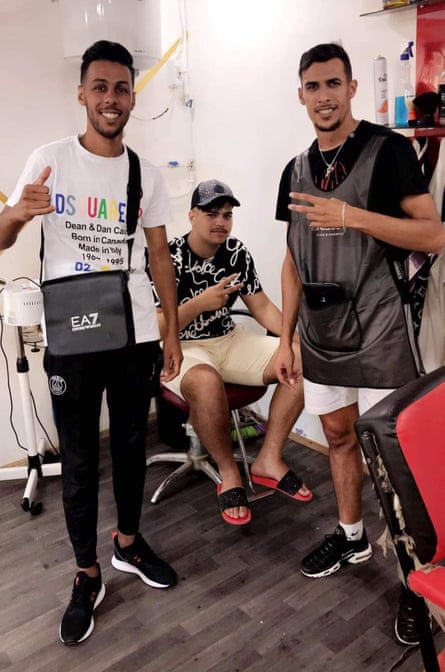
His family has been searching for him since. Abdallah, who lives in France, fears it is a race against time.
Spanish police introduced a database in 2007 in which data and genetic samples from unidentified remains are meant to be logged. In practice, the system breaks down when it comes to families searching for missing relatives, who have no clear information about how to access it.
The family had provided a DNA sample soon after Tayeb’s disappearance. With no news by February, they travelled to southern Spain for a second time to search for him. At the morgue in Almería, a forensic doctor reacted to Tayeb’s photo, saying he looked familiar. She recalled a necklace, but said the man she was thinking of was believed to have died in a jet ski accident.
“It was a really intense moment because we knew that Oussama was wearing a jet ski lifejacket,” Abdallah said.
Even with the knowledge that Tayeb’s body may have been found, his cousin was unable to see the corpse lying in the morgue without a police officer. Abdallah remembered the shocking callousness with which he was greeted at one of the many police stations he tried. “One policeman told us that if ‘they don’t want to disappear, they shouldn’t have taken a boat to Spain’.”
Looming over Abdallah’s continuing search is a practical pressure mentioned by the Spanish pathologist: bodies in the morgue are usually kept for a year and then buried, whether identified or not. “We only want an answer. If we see the chain, this would be like a death certificate. It’s so heartbreaking. It’s like we’re leaving Oussama in the fridge and we can’t do anything about it,” he said.
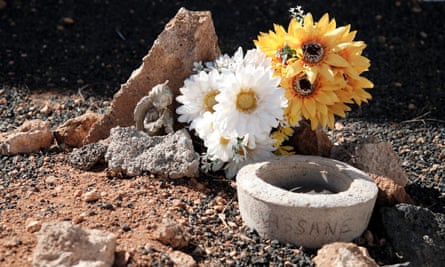
‘Here lies a brother who lost his life’
The local authorities that receive the most bodies are often on small islands and are increasingly saying they cannot cope.
They warn that an already inadequate system is going backwards. Spain’s Canary Islands have reported a record 35,410 men, women and children reaching the archipelago by boat this year. In recent months, most of these vessels have sought to land on the tiny, remote island of El Hierro. In the past six weeks alone, seven unidentified people were buried on the island.
The burial vaults of 15 unidentified people who were found dead on a rickety wooden vessel in 2020, in the town of Agüimes on Gran Canaria, bear identical plaques that read simply: “Here lies a brother who lost his life trying to reach our shores.”
In the Muslim section of Lanzarote’s Teguise cemetery, the graves of children are marked with circles of stones. They include the grave of a baby believed to have been stillborn on a deadly crossing from Morocco in 2020. Alhassane Bangoura’s body was separated from his mother during the rescue and was buried in an unmarked grave. His name is only recorded informally, engraved on a bowl by locals moved by his plight.
It is the same story in the other countries at the edge of the EU; unmarked graves dotted along their frontiers standing testament to the crisis. Along the land borders, in Croatia, Poland, Lithuania, the numbers of unmarked graves are fewer but still they are there, blank stones or sometimes an NN marked on plaques.
In France, the anonymous inscription “X” stands out in cemeteries in Calais. The numbers seem low compared with those found along the southern coastal borders: 35 out of 242 migrants and refugees who died on the Franco-British border since 2014 remain unidentified. The high proportion of the dead identified reflects the fact that people spend time waiting before attempting the Channel crossing so there are often contacts still in France able to name those who die.
Fragments of hope
Leaked footage of Polish border guards laughing at a young man hanging upside down, trapped by his foot, stuck in the razor wire on the top of the 180km (110-mile) steel border fence separating Belarus from Poland caused a brief social media storm.
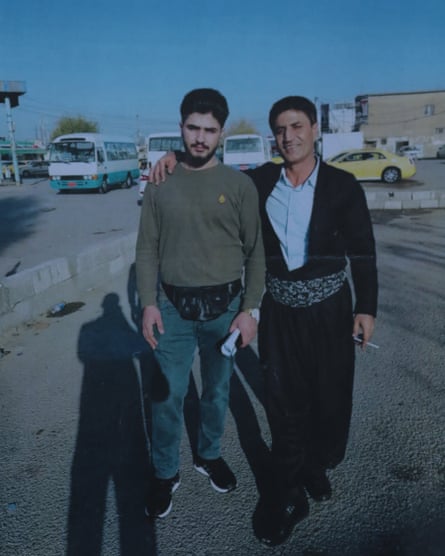
But the moment he is caught in the searchlights, his frightened face briefly frozen, has haunted 50-year-old Kafya Rachid for the past year. She is sure the man is her missing child, Mohammed Sabah, who was 22 when she last saw him alive.
Sabah had flown from his home in Iraqi Kurdistan in the autumn of 2021 to Belarus, for which he had a visa. He was successfully taken across the EU border by smugglers but was detained about 50km (30 miles) into Poland and deported back to Belarus.
Waiting to cross again, his messages suddenly stopped. The family had been coming to terms with the fact he was probably dead. Then the video surfaced. With little else to go on, fragments such as this give families hope.
Sabah’s parents, as so often happens, were unable to get visas to travel to the EU. Instead, Rekaut Rachid, an uncle of Sabah who has lived in London since 1999, has made three trips to Poland to try to find him.
Rachid believes the Polish authorities lied to him when they told him the man in the video was Egyptian, and this keeps him searching. “They are hiding something. Five per cent of me thinks maybe he died. But 95% of me thinks he is in prison somewhere in Poland,” he said, adding: “My sister calls every day to ask if I think he is still alive. I don’t know how to answer.”
Shipping container morgues
In a corner of the hospital car park in the Greek city of Alexandroupolis, two battered refrigerated shipping containers stand next to some rubbish bins. Inside are the bodies of 40 people.
The border from Turkey into Greece over the Evros River nearby is only a 10- to 20-minute crossing, but people cross at night when their small rubber boats can easily hit a tree and capsize. Corpses decompose quickly in the riverbed mud, so that facial characteristics, clothing and any documents that might help identify them are rapidly destroyed.
Twenty of the corpses in the containers are the charred remains of migrants who died in wildfires that consumed this part of Greece during the summer’s heatwave. Identification has proved exceptionally difficult, with only four of the dead named to date.
Prof Pavlos Pavlidis, the forensic pathologist for the area, works to determine the cause of death, to collect DNA samples and to catalogue any personal effects that might help relatives identify their loved ones at a later date.

The temporary container morgues in Alexandroupolis were donated by the ICRC. The humanitarian agency has given another container to the island of Lesbos, another migration hotspot, for the same purpose.
Lampedusa does not have that luxury. “There are no morgues and no refrigerated units,” said Salvatore Vella, the Sicilian head prosecutor who leads investigations into shipwrecks off its coast. “Once placed in body bags, the bodies of migrants are transferred to Sicily. Burial is managed by individual towns. It has happened that migrants have sometimes been buried in sort of mass graves within cemeteries.”
The scale of the problem was becoming so acute, said Filippo Furri, an anthropologist and an associate researcher at Mecmi, a group that examines deaths during migration, that “there have been cases of coffins abandoned in cemetery warehouses due to lack of space, or bodies that remain in hospital morgues”.
‘It’s not only a technical difficulty but also a political one’
“If you count the relatives of those who are missing, hundreds of thousands of people are impacted. They don’t know where their loved ones are. Were they well treated, were they respected when they were buried? That’s what preys on families’ minds,” said Laurel Clegg, the ICRC forensic coordinator for migration in Europe. “We have an obligation to provide the dead with a dignified burial; and [to address] the other side, providing answers to families through identification of the dead.”
She said keeping track of the dead relied on lots of parts working well together: a legal framework that protected the unidentified dead, consistent postmortems, morgues, registries, dignified transport and cemeteries.
The systems are inadequate, however, despite the EU parliament resolution. There are still no common rules about what information should be collected, nor a centralised place to store this information. The political focus is on catching the smugglers rather than finding out who their victims are.
A spokesperson for the European Commission said the rights and dignity of refugees and migrants had to be addressed alongside tackling people smuggling. They said each member state was responsible individually for how it dealt with those who died on its borders, but that the commission was working to improve coordination and protocols and “regrets the loss of every human life” .
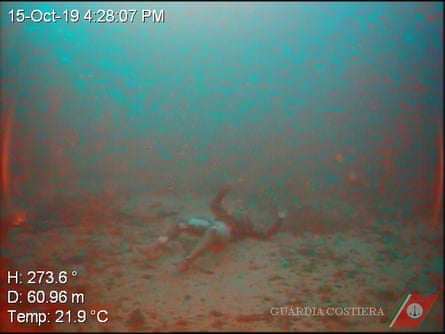
In Italy, significant efforts have been made to identify the dead from a couple of well-reported, large-scale disasters. Cristina Cattaneo, the head of the laboratory of forensic anthropology and odontology (Labanof) at the University of Milan, has spent years working to identify the dead from a shipwreck in 2015 in which more than 1,000 people lost their lives.
Raising the wreck to retrieve the bodies has cost €9.5m (£8.1m) already. Organising the 30,000 mixed bones into identifiable remains of 528 bodies has been a herculean task. Only six victims have so far been issued official death certificates.
As political positions on irregular migration have hardened, experts are finding official enthusiasm for their complex work has diminished. “It’s not only a technical difficulty but also a political one,” Cattaneo said.
In Sicily, Vella has been investigating a fishing boat that sank in October 2019. It was carrying 49 people, mostly from Tunisia. Just a few miles off shore, a group onboard filmed themselves celebrating their imminent arrival in Europe before the boat ran out of fuel and capsized. The Italian coastguard rescued 22 people but 27 others lost their lives.
Coastguard divers, using robots, captured images of bodies floating near the vessel, but were unable to recover all of them. The footage circulated around the world. A group of Tunisian women who had been searching for their sons contacted the Italian authorities and were given permits to travel to meet the prosecutor, who showed them more footage.
One mother, Zakia Hamidi, recognised her 18-year-old son, Fheker. It was a searing experience for both her and Vella: “At that moment, I realised the difference between a mother, torn apart by grief, but who at least will return home with her child’s body, and those mothers who will not have a body to mourn. It is something heartbreaking.”
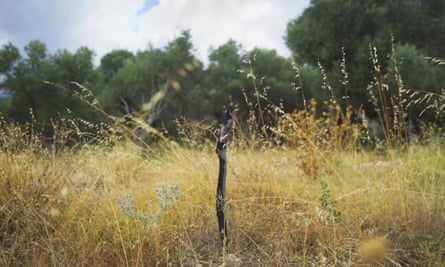
The torture of not knowing
The grief that people feel when they have no certainty about the fate of their missing relatives has a very particular intensity.
Dr Pauline Boss, professor emeritus of psychology at the University of Minnesota in the US, was the first to describe this “ambiguous loss”. “You are stuck, immobilised, you feel guilty if you begin again because that would mean accepting the person is dead. Grieving is frozen, your decision-making is frozen, you can’t work out the facts, can’t answer the questions,” she said.

Not knowing often has severe practical consequences too. Spouses may not be able to exercise their parental rights, inherit assets or claim welfare support or pensions without a death certificate. Orphans cannot be adopted by extended family without one either.
Sometimes relatives are left in the dark for years. A decade on from a shipwreck disaster in 2013, bereaved families continue to gather in Lampedusa every year, still searching for answers. Among them this year was a Syrian woman, Sabah al-Joury, whose son Abdulqader was on the boat. She said that not knowing where he ended up was like having “an open wound”.
Sabah’s family said the torture of not being able to find out what happened to him was “like dying everyday”. Abdallah thinks he must make another trip from Paris to southern Spain before the end of the year. “What is difficult is not to have the body, not to be able to bury him,” he said.
Rituals around death were indicative of a deep human need, said Boss. “The most important thing is for the name to be marked somewhere, so the family can visit, and the missing can be remembered. A name means you were on this Earth, not forgotten.”







































